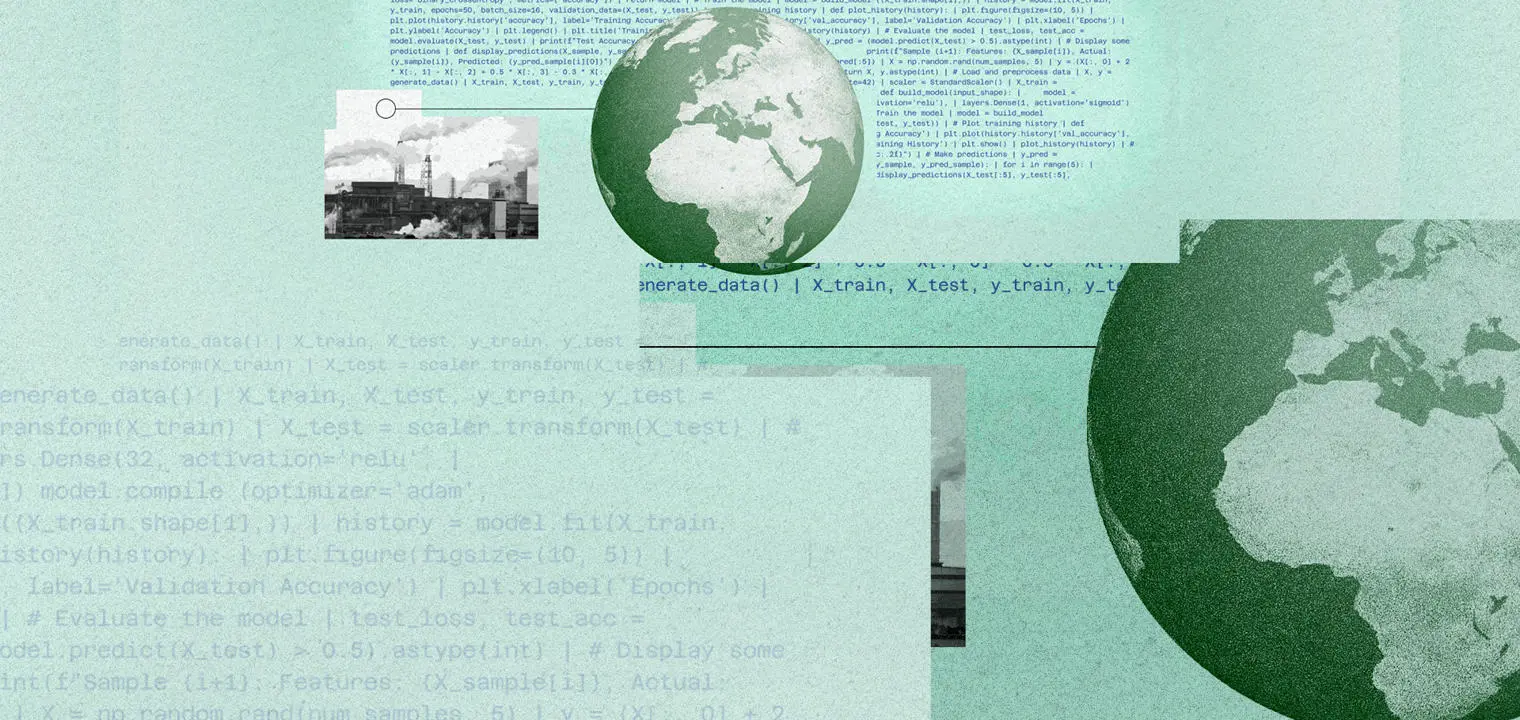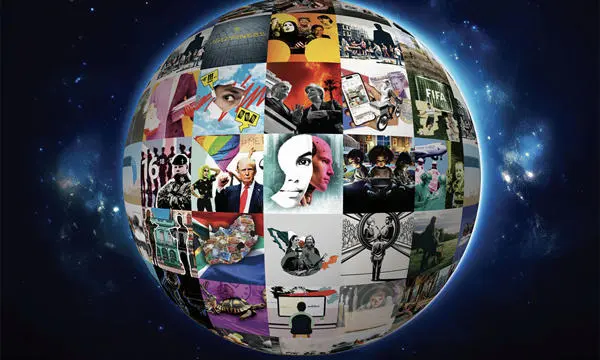Ask not what AI will do, but what we can make it do

Contents
We’ve seen the headlines: "AI will boil the oceans" (Forbes), "AI could reshape everything we know about climate change" (Time), or the more ambivalent "Will AI ruin the planet or save the planet?" (The New York Times). As the capabilities of artificial intelligence explode, so too do the predictions – bold, sweeping, often contradictory. Depending on whom you ask, AI is either the saviour of the planet or the next existential threat to it.
These headlines, while attention-grabbing, risk missing the point. The important question isn’t what AI will do to the climate. It’s what we choose to make AI do.
AI can offer us a sustainable future
Artificial intelligence opens up a wide range of futures. Yes, it consumes energy, and yes, it raises legitimate concerns. But it also has the potential to dramatically accelerate the clean energy transition – if we build and deploy it with that in mind. Its trajectory isn’t predetermined. It depends on the infrastructure we build, the incentives we set, and the applications we choose to prioritise.
So rather than treat AI as an uncontrollable force, maybe we should see it for what it is: a tool. And the climate challenge is a test of whether we’re smart enough to use it well.
AI runs on electricity – sometimes a lot of it. Training a large model can use as much electricity as a small town. Inference – the stage when models like ChatGPT respond to users – happens billions of times a day and adds up quickly.
The International Energy Agency (IEA) estimates that global electricity demand from data centres, cryptocurrencies and AI could grow from 416 terawatt hours (TWh) in 2024 to between 700 and over 1,700 TWh by 2035, depending on how things unfold. That’s a wide range – roughly the difference between the annual electricity use of Brazil and all of Latin America and the Caribbean. Still, even the upper end would be about 4 per cent of global electricity demand in 2035, less than what the world already uses for air conditioning (2,111 TWh in 2022, see page 299 Annex A Table A.3 of the World Energy Outlook 2024 report).
How much energy AI uses, however, is not the main story. The more important questions are where that energy comes from and what AI is being used for.
How are governments attempting to manage the power of AI?
AI is not inherently clean or dirty – it can be powered by decarbonised sources of electricity. Some countries are already well-positioned, with abundant and cheap zero-carbon electricity from hydro, geothermal or solar. In the US, Microsoft is planning to take over the former Three Mile Island nuclear site to power a new data centre using nuclear energy. Solar and wind, combined with energy storage, are another viable path.
And while the headlines can suggest that AI’s energy and carbon footprint is spiralling out of control, the reality so far is more measured. As Hannah Ritchie notes in her analysis, the carbon footprint of a single ChatGPT query is still relatively small and far less than many everyday physical activities. The critical point is that the energy intensity of AI only becomes a climate problem if that energy comes from high-emitting sources. Fortunately, clean alternatives are available and scaling fast.
It’s tempting to treat data centres – and by extension, AI – as just another electricity load, manageable through general climate policy tools like carbon pricing. In a world with well-functioning electricity markets and fully internalised carbon costs, we might not need AI-specific rules. But we don’t live in that world. Many grids still fail to price emissions properly. And despite corporate sustainability pledges, data centre emissions are rising.
Governments are beginning to act: some have (temporarily) paused new data centres in grid-constrained areas (in Amsterdam and Dublin, for example), while others are mandating efficiency standards or incentivising clean power deals. The EU now requires data centres to report on energy use. China has introduced standards targeting 100 per cent clean electricity by 2032. In the US, the state of California is experimenting with disclosure mandates. These early efforts reflect a simple fact: AI infrastructure is now too large, too visible, and too power-hungry to ignore.
While current policies are scattered, they suggest targeted regulation is feasible. A more coherent framework would begin with mandatory disclosure of electricity use and emissions intensity. Transparency is essential. Over time, policymakers could impose performance standards – just as they’ve done for buildings and vehicles. Importantly, incentives should reward actual decarbonisation, not just certificates or offsets.
Putting AI to work in the right areas
The other important question is what AI is being used for, because AI can help cut emissions if we put it to work in the right places. It is already helping grid operators forecast demand and supply more accurately, adjust loads in real time, and integrate more renewables. The IEA estimates that smarter forecasting and optimisation could unlock up to 175 gigawatts of transmission capacity globally by 2030 [IEA Energy and AI report p16] – without building a single new power line. That’s a significant boost in system efficiency, achieved entirely through better software.
AI is also speeding up the discovery of new clean energy technologies. From solar cells to batteries to carbon capture materials, researchers are now using machine learning to screen thousands of candidates and run simulations that would take months in a lab. The IEA notes that only about 0.01 per cent of promising solar PV materials have been tested [IEA Energy and AI report p.17]. AI could change that.
Of course, just because AI can help doesn’t mean it will. In many cases, it could just as easily raise emissions. AI is already being used to boost oil and gas extraction by optimising exploration and drilling. Autonomous vehicles, if deployed at scale, could encourage people to abandon public transport rather than reduce overall travel. AI-generated content, synthetic influencers, and algorithmically- optimised ad delivery are not exactly decarbonisation priorities, but they still require substantial computing resources.
We also haven't yet imagined all the potential uses of AI. Like electricity before it, AI is a general purpose technology – capable of transforming entire sectors, often in unexpected ways. When electricity was first introduced, few imagined it would one day power electric toothbrushes, toys for entertaining pets, or glowing party ice cubes – let alone future inventions such as computers and smartphones. We should expect the same with AI: a wave of new applications, some useful, some wasteful, and some harmful.
That’s why it's not enough to focus on how much energy AI will use. What matters just as much is what kind of activities it enables – and whether those activities genuinely enhance welfare. Steering this technology toward solving real problems, rather than amplifying old ones, may be one of the most important climate and social choices we face.
The AI policy debate is just beginning
AI’s climate and social impacts will be shaped by policy, regulation, and the incentives we build around it. We don’t know exactly what a future with AI will look like, but we do know it’s being built now, through the choices engineers, companies, and policymakers make every day.
So far, most policies focus on how much energy AI uses. But what it’s used for matters just as much. Steering AI toward cleaner, more productive uses – like energy optimisation or clean tech R&D – raises tough questions: how can strategic sectors attract AI talent? How can knowledge diffuse across boundaries?
These questions are harder to answer, but no less urgent. The AI policy debate is just beginning, and economists have a central role to play – not just in pricing externalities, but in shaping the direction of innovation itself.
AI, technology and society special edition
At LSE our researchers are using technology’s revolutionary power to understand our world better, looking at AI and technology’s potential to do good, and limiting its potential to do harm.
Browse upcoming events, short films, articles and blogs on AI, technology and society on our dedicated hub.
Join us on campus or online wherever you are in the world for LSE Festival: Visions of the Future, a week of special events 16-21 June 2025, free and open to all.
The London School of Economics and Political Science (LSE) is a world-leading university, specialising in social sciences and named University of the Year by the Good University Guide 2025. Based in the heart of London, we are a global community of people and ideas that transform the world.



